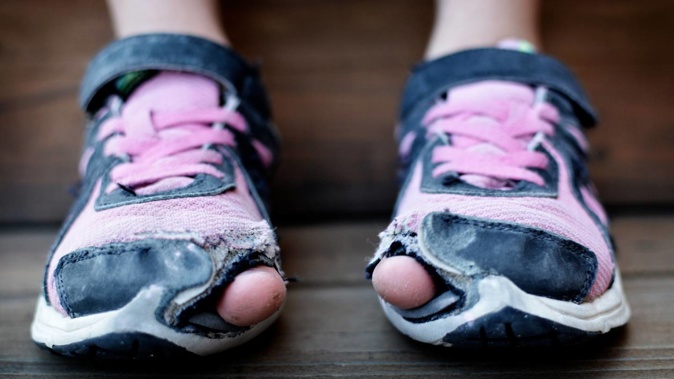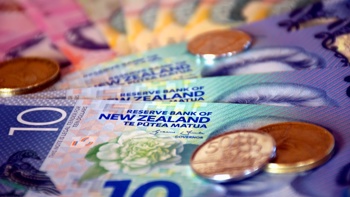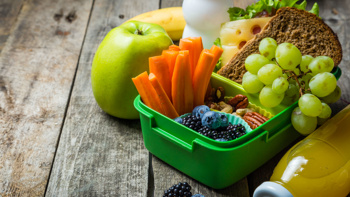
Child poverty continues to slowly decline in New Zealand but remains above comparable countries in Europe, particularly for single-parent families, according to the latest long-term data.
Material hardship rates for children have decreased dramatically since a peak in the years following the Global Financial Crisis (GFC) in 2008, from 25 per cent in 2011 to 11 per cent in 2021 (down from 15 per cent in 2017 when Labour came into Government).
But while overall trends are improving, the gains are not being shared equally. Neither the full impact of Covid-19 nor the Government's response were recorded in the data.
For children in single-parent households, the number growing up in material hardship is nearly one in three.
Ethnic disparities remain also, with Māori children more than twice as likely than average to experience material hardship - and Pasifika nearly three times more likely.
The Green Party has called the latest data "sobering" and urged the Government to plug gaps in the welfare system.
The annual Ministry of Social Development Child Poverty Report, released today, takes a long-term look at child poverty data alongside international comparisons.
Author Bryan Perry said the general downward trend in material hardship rates from 2013 to 2021 could be put down to "rising employment rates, rising wages, increases to income support for families with children, increased support for housing and childcare costs, and other measures that reduce demand on the family budget (eg free doctors' visits and the Food in Schools programme)".
Perry found the level of child poverty in New Zealand sat slightly above the median rate in European countries, which decreased from 12.3 per cent to 10.3 per cent from 2017 to 2020, while New Zealand's rate decreased from 13.5 per cent to 10.6 per cent.
The top performers were Iceland and Finland at three and four per cent respectively. In Denmark it was seven per cent.
New Zealand was about level with Germany and Portugal, while the United Kingdom's rate was 17 per cent.
/cloudfront-ap-southeast-2.images.arcpublishing.com/nzme/TRK7NKO7YF3TSK3F3UJ7WQARSY.jpg)
Prime Minister Jacinda Ardern. Photo / Mark Mitchell
For single-parent families the difference in the New Zealand rate was even more pronounced, at 29 per cent - well above the European rate of 19 per cent.
Rent and housing costs continued to also make up an increasing proportion of household incomes, disproportionately impacting those on lower incomes.
Housing costs for all households with children increased from 15 per cent in 1988 to 22 per cent in 2021. Meanwhile, for those in the lowest fifth, they increased from 23 per cent to 40 per cent.
The worst-hit group was those that rented privately and received the Accommodation Supplement (AS), with almost half of their household income spent on accommodation on average.
Perry also noted the survey only captured those children in private dwellings, and not those in hotels, motels, boarding houses, hostels and camping grounds and so on.
He said there remained about 60,000 children, or five per cent, in "very severe hardship".
The Household Economic Survey was completed from July 2020 until June 2021. It asked respondents about their income over the previous 12 months, meaning it did not capture the full impact of Covid-19 nor the Government response.
Perry said the next year's survey would be able to capture those impacts.
Despite the disclaimer in the report, Prime Minister Jacinda Ardern claimed the Government's policies had been effective through Covid-19.
"When Covid hit we purposefully put in place policies to avoid the spike in child poverty that occurred during the GFC, and today's report shows those policies have been effective so far," Ardern, who is also Minister for Child Poverty Reduction, said.
Ardern said this included a family support package, minimum wage increases, benefit increases, and the Food in Schools programme.
She was not available on Friday to answer questions about the report.
Green Party spokeswoman for child poverty reduction Jan Logie said while there had been some "marginal improvement" over the years, the number of children trapped in poverty was "unacceptable".
"When combined with recent data on food prices, rising rents, and high energy bills, the findings of this report are even more sobering."
Logie said that one-adult households' hardship rate was typically three to four times higher than for two-parent households. One of the main reasons for this is that there are fewer opportunities for paid work in a one-adult household, and Working for Families credits continue to discriminate against parents on benefits.
"The message could not be any clearer: we need one simplified Family Support Credit that provides whānau with the income they need, no matter whether parents are in work," Logie said.
Report author Bryan Perry also made several comments in the report about "common misconceptions or misunderstandings" on child poverty.
Perry said the claim "New Zealand has a high child poverty rate" relative to other countries was not based on evidence.
He also disputed the idea poverty mainly affected families on benefits and that employment was the way out.
"Around half the children in households in material hardship come from households whose main source of income is the market," Perry said.
Take your Radio, Podcasts and Music with you









